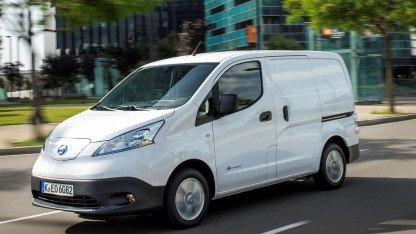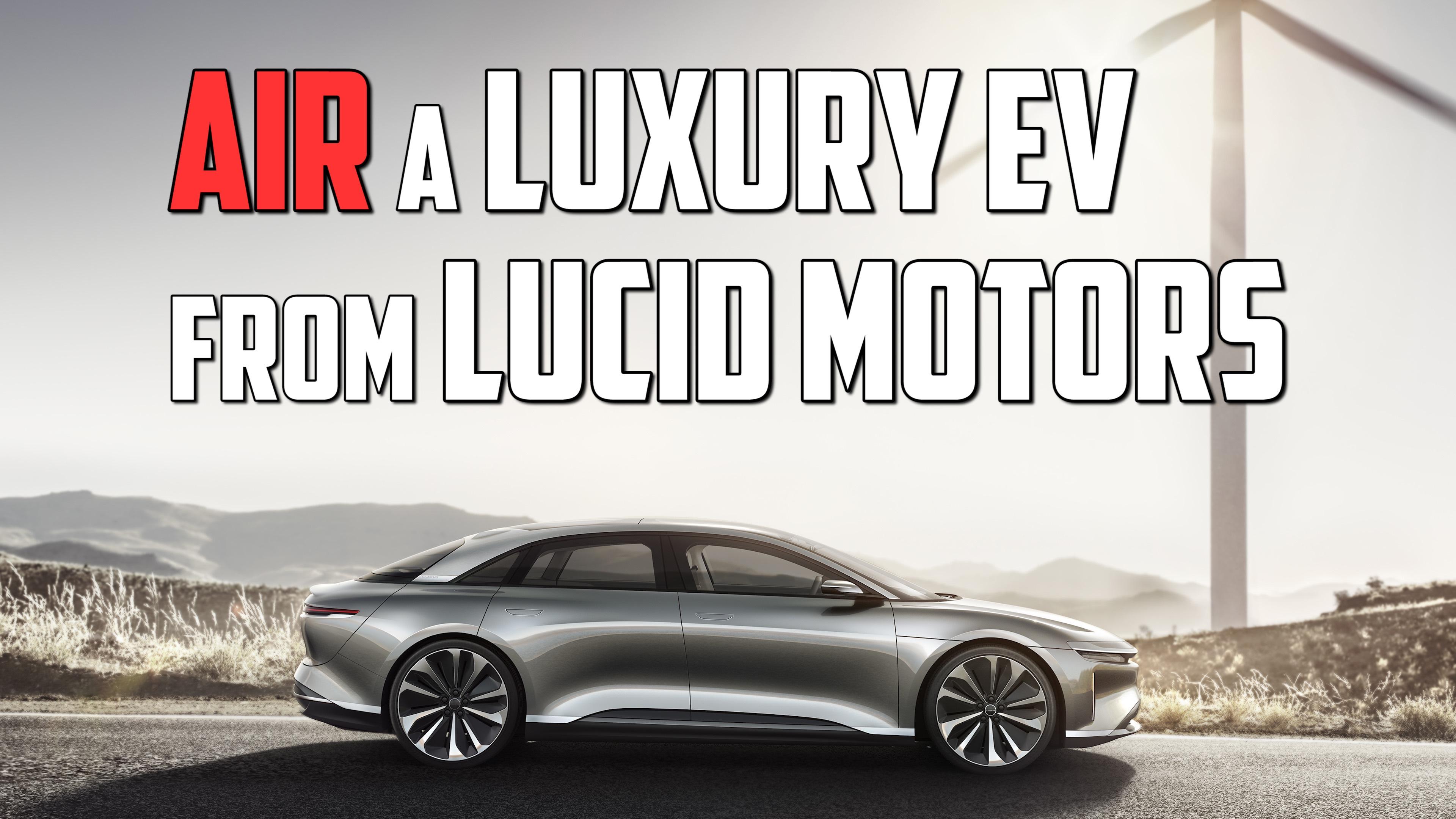Introduced in 1998, the TT has been a mainstay of the Audi line-up for more than 20 years. But with buyer preferences having swung firmly in the direction of its SUV models and Audi directing €14 billion (£12.3 billion) into electric car development over the next five years, serious doubts hang over its future. An earlier… Continue reading Audi unveils lightly facelifted TT RS
Tag: Electric vehicles
Bet everything on electric: Inside Volkswagen’s radical strategy shift
WOLFSBURG, Germany (Reuters) – If Volkswagen realizes its ambition of becoming the global leader in electric cars, it will be thanks to a radical and risky bet born out of the biggest calamity in its history. FILE PHOTO: An autonomous Volkswagen I.D. Crozz concept vehicle is shown at the Los Angeles Auto Show in Los… Continue reading Bet everything on electric: Inside Volkswagen’s radical strategy shift
Van: Nissan NV200 is offered only as an electric version
The Nissan vans NV200 is no longer available as a diesel model from the summer of 2019. Then only the electric version eNV200 for Europe will be produced. February 6, 2019, 7:11 am, Andreas Donath Nissan e-NV200 (Photo: Nissan) The Japanese manufacturer Nissan builds its Van NV200 from summer only in an electric version. The… Continue reading Van: Nissan NV200 is offered only as an electric version
China’s CATL, Honda plan to co-operate on EV battery development
TOKYO (Reuters) – Contemporary Amperex Technology Ltd and Honda Motor have signed an agreement to co-operate on jointly developing lithium ion batteries for electric vehicles, as China’s top EV battery maker expands its tie-ups with Japanese automakers. CATL said on Tuesday it had signed a memorandum of understanding with Honda under which it would guarantee… Continue reading China’s CATL, Honda plan to co-operate on EV battery development
Why NIO, China’s Tesla, Rose ~24% in January
Why NIO, China’s Tesla, Rose ~24% in January More Why NIO, China’s Tesla, Rose ~24% in JanuaryNIO’s January performance Since NIO (NIO), popularly hailed as China’s Tesla, was listed on the NYSE in September 2018, it has seen wild roller-coaster ride. In October and December 2018, NIO fell Go to Source
Polestar will reveal its first all-electric car on February 27th
Polestar Polestar was hyping up its first all-electric car even before its first car of any kind was ready, but now it’s finally prepared to show its hand. The company has announced that it’s revealing the Polestar 2 through a live online event on February 27th at 7AM Eastern. Sorry, that means no in-person looks… Continue reading Polestar will reveal its first all-electric car on February 27th
The Ultracapacitors, Electrodes, & Battery Manufacturing Tech Tesla Gets With Maxwell Technologies
InvestElectric CarsElectric Car BenefitsElectric Car SalesSolar Energy RocksRSSAdvertisePrivacy Policy
Batteries Published on February 4th, 2019 | by Dr. Maximilian Holland
The Ultracapacitors, Electrodes, & Battery Manufacturing Tech Tesla Gets With Maxwell TechnologiesTwitterLinkedInFacebookFebruary 4th, 2019 by Dr. Maximilian Holland
As reported earlier today, Tesla has nearly acquired Maxwell Technologies, a San Diego–based energy storage products and research business, for $218 million, with the transaction expected to complete in Q2 2019. Is this a stationary storage play or an EV play for Tesla … or both?Maxwell’s Durablue Ultracapacitor. Graphic from Maxwell’s Blog.
Maxwell is Best Known for its Ultracapacitors — What are They?Ultracapacitors store electrical energy, like batteries, but rather than electro-chemically (batteries), they store the energy electro-statically. There’s also a notable difference in balance between energy density and power density. Lithium-ion batteries have energy density typically in the 150–250 Wh/kg range, and power density in the 250–350 W/kg range. Maxwell’s current commercial ultracapacitors, such as the DuraBlue range pictured above, have much lower energy density of 8–10 Wh/kg (around 5% that of lithium-ion), yet much higher power density of 12–14 kW/kg (around 45× that of lithium-ion).
In the context of EV applications, this means that a 50 kg array of ultracapacitors could potentially input or output 650 kW of burst power (although, at 0.18 kWh, this would last just a second or so). Lower power levels would obviously be sustained for proportionately longer. For context, that’s about twice the power that the Tesla Model 3 Performance’s 480 kg battery pack is currently tuned to provide (331 kW).
If the economics made sense, a modest ultracapacitor array could work alongside the battery pack as a cache of energy, to reduce the load on (and/or work in parallel with) the main battery during short bursts of hard acceleration or strong regenerative braking. Since ultracapacitors can perform reliably over hundreds of thousands of cycles, this could also reduce the cycling load on the lithium-ion pack, and potentially allow it to have a chemistry that prioritizes energy density over power density. The round-trip energy efficiency of Maxwell’s ultracapacitors is in the 80% efficiency range, which is pretty decent (lithium-ion is 80 to 90%). In a mid-2018 conversation with the San Diego Business Journal, Maxwell reported having already sold 6.1 million ultracapacitors to automakers.
With their extremely fast response, high power density, and high cycle durability, ultracapacitors also have applications in fast-response stationary storage applications and grid load balancing (read more about Maxwell’s case studies of these).
Tesla Powerpacks
Dry Battery ElectrodesAnother interesting technology that Maxwell has developed is its dry battery electrode manufacturing process. Maxwell believes it has potential to lower traditional battery manufacturing costs:
“We believe that our patent-protected, proprietary manufacturing process, which has been utilized through many years of ultracapacitor production, can be applied to the manufacturing of battery electrode without the use of solvents to produce a highly reliable electrode material with uniform characteristics resulting in enhanced product performance, long-term durability, and lower manufacturing cost.” (Maxwell Annual Report, 2017)
Maxwell undertook proof of concept pilot testing between 2016 and 2017 with an automotive OEM and tier 1 supplier, which the company believes “has demonstrated the significant performance and cost advantages of our dry electrode manufacturing process compared with wet electrode manufacturing, while providing the required consistency and reproducibility in manufacturing a pilot-scale dry electrode roll.” (Maxwell Annual Report, 2017)
Image courtesy of Maxwell’s Technology Presentations
You can see Maxwell’s other claims for the technology in the above presentation slide, from the Needham investor conference in mid January this year. Maxwell’s 2017 annual report claims that, “The dry electrode can be further applied to advanced battery chemistries, offering well over 300 Wh/kg at the cell level.” It’s not clear whether these energy densities are enabled by their technology, or are simply compatible with the technology — the above slide appears to suggest the technology has a direct bearing on energy density. The claims of 2× durability improvement and 10–20% cost reduction will also no doubt have interested Tesla.
How will Tesla Leverage Maxwell’s TechnologiesThe ultracapacitor technologies and/or the dry battery electrode technologies could have been the attraction for Tesla. Given Tesla’s deep investment in lithium-ion battery production, for both EVs and stationary storage, the potential cost savings and performance benefits from the dry battery electrode process is clearly interesting.
The ultracapacitors also have potential for both stationary and mobile applications. The response speed, power density, and robustness would certainly make sense in heavy-duty grid applications, likely as a fast and powerful energy cache used alongside lithium-ion storage. Although it’s not so clear that there’s a significant need or benefit for ultracapacitors in Tesla’s passenger EV applications (beyond potentially enabling a different balance of lithium-ion cell characteristics, as mentioned above), the Tesla Semi’s heavy-duty use case may make more sense for employing an ultracapacitor cache. There even may be a case for using them in the Roadster for burst power.
It will be very interesting to see how Tesla leverages Maxwell Technologies. Readers will no doubt have many ideas about how Tesla will benefit from this acquisition. Please do jump in and share them in the comments.
About the AuthorDr. Maximilian Holland Max is an anthropologist, social theorist and international political economist, trying to ask questions and encourage critical thinking about social and environmental justice, sustainability and the human condition. He has lived and worked in Europe and Asia, and is currently based in Barcelona.
Back to Top ↑AdvertisementAdvertise with CleanTechnica to get your company in front of our readers.
CleanTechnica Clothing & Cups Top News On CleanTechnica Join CleanTechnica Today!
AdvertisementAdvertisementFollow CleanTechnicaFollow @cleantechnica
Our New Electric Car Driver Report Read & share our new report on “electric car drivers, what they desire, and what the demand.”The EV Safety Advantage
Read & share our free report on EV safety, “The EV Safety Advantage.”EV Charging Guidelines for Cities
Share our free report on EV charging guidelines for cities, “Electric Vehicle Charging Infrastructure: Guidelines For Cities.”30 Electric Car Benefits Our Electric Vehicle Reviews
Tesla News
Cleantech Press Releases New Research Shows That Only Two Large Petroleum Companies Have Meaningful Emission Reduction Targets Koben Announces EVOLVE EVSF —Grid-Friendly Modular EV Store & Forward System The New Danish Climate Plan — Together For A Greener Future38 Anti-Cleantech Myths Wind & Solar Prices Beat Fossils Cost of Solar Panels Collapses
© 2018 Sustainable Enterprises Media, Inc.
InvestElectric CarsElectric Car BenefitsElectric Car SalesSolar Energy RocksRSSAdvertisePrivacy Policy
This site uses cookies: Find out more.Okay, thanks
Lucid Motors in talks about sharing its technology with other automakers – Autoblog – Autoblog
Electric vehicle upstart Lucid Motors is in talks with other automakers about sharing its technology and plans to go public in a few years, but the company isn’t considering a potential sale. Bloomberg caught up with Chief Technology Officer Peter Rawlinson, who said the company remains on track to build the Air EV sedan in… Continue reading Lucid Motors in talks about sharing its technology with other automakers – Autoblog – Autoblog
Purchase of energy storage specialist Maxwell: So Tesla makes the race for the super battery exciting
Christophe Gateau / dpa Tesla Model 3 in a showroom Has three weeks ago Tesla-Boss Elon Musk His company actually one vigorous austerity measures including job cuts prescribed, Musk wants to reduce the production costs of the Model 3 – and so bring the promised Model 3 entry-level version for $ 35,000 on the market.… Continue reading Purchase of energy storage specialist Maxwell: So Tesla makes the race for the super battery exciting
ClipperCreek drops price of CS Series EV charging stations
ClipperCreek has announced a $400 price reduction on its Liberty Plugin enabled CS Series of charging stations. The Liberty-enabled CS Charging stations are ClipperCreek’s flagship access control models, and pricing has been reduced on all configurations from 16 to 80 amps. The new price is effective immediately. “The price reduction was made possible by a variety… Continue reading ClipperCreek drops price of CS Series EV charging stations


